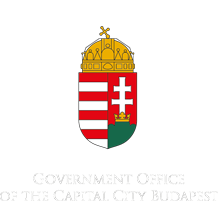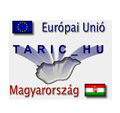

International metrology cooperation
The global trade and technical development need coherent and accurate measurements require international cooperation of responsible metrology bodies. The most important regional and global metrology organizations are the following:
- Metere Convention (CM), signed by 17 countries on 20. May 1875 in Paris. The Austro-Hungarian Monarchy was one of the founder member. Nowadays, there are 55 Member States ,including all the major industrialized countries, and 33 associate members of . the Metere Convention. The Convention of the Metre is a treaty that created the International Bureau of Weights and Measures (BIPM), an intergovernmental organization under the authority of the General Conference on Weights and Measures (CGPM) and the supervision of the International Committee for Weights and Measures (CIPM). The BIPM acts in matters of world metrology, particularly concerning the demand for measurement standards of ever increasing accuracy, range and diversity, and the need to demonstrate equivalence between national measurement standards. On 14 October 1999, 38 directors of the national metrology institutes (NMIs) of Member States signed a Mutual Recognition Arrangement (CIPM-MRA) for national measurement standards and for calibration and measurement certificates issued by NMIs. The CIPM MRA has now been signed by the representatives of 86 institutes – from 50 Member States, 33 Associates of the CGPM, and 3 international organizations – and covers a further 138 institutes designated by the signatory bodies. Public on-line databases are available for information about the internationally recognized Calibration and Measurement Capabilities (CMC) of the participating institutes, and information about the key and supplementary comparisons (KCDB) supporting these CMCs. List of authorized laboratories to use CIPM MRA logo in their measuring and calibration certificate are also available.
- Organisation International de Métrologie Légale (OIML), International Organization of Legal Metrology was established in 1955 by the members of the Metre Convention for promote the global harmonization of legal metrology procedures. Since that time, the OIML has developed a worldwide technical structure that provides its Members with harmonized requirements for measuring instruments, metrological guidelines for the elaboration of national and regional requirements concerning the manufacture and use of measuring instruments for legal metrology applications. Hungary is one of the 57 member state of the OIML. The OIML Certificate System for Measuring Instruments is a system for issuing, registering and using OIML Certificates of Conformity for types of measuring instruments based on the requirements of Recommendations of the OIML. It is a voluntary system and aims to facilitate, accelerate, and harmonize the work of national and regional bodies that approve types of measuring instruments being subject to state control within OIML Members.
- European Cooperation in Legal Metrology (WELMEC): WELMEC was founded on 8. June 1990 with 13 representative Members from national authorities responsible for legal metrology in European Union and EFTA Member States signing up to a Memorandum of Understanding. Currently there are 30 Members , including Hungary, and 7 Associate Members in the WELMEC Committee. The principal aim of WELMEC is to establish a harmonised and consistent approach to European legal metrology. WELMEC is concerned with the establishment, maintenance and improvement of channels of communication between its members and associate members and aims to develop mutual confidence through participation in common activities. WELMEC’s work is carried out by its Working Groups. These groups provide Welmec guides .
- European Association of National Metrology Institutes (EURAMET) is a Regional Metrology Organisation (RMO) of Europe. It coordinates the cooperation of 37 National Metrology Institutes (NMI) of Europe in fields like research in metrology, traceability of measurements to the SI units, international recognition of national measurement standards and related Calibration and Measurement Capabilities (CMC) of its members. Through knowledge transfer and cooperation among its members, EURAMET facilitates the development of the national metrology infrastructures. EURAMET is responsible for the elaboration and execution of the European Metrology Research Programme, known as the (EMRP) , which is designed to encourage collaboration between (NMIs) and partners in industry or academia. The programme funds joint research projects in specific fields of metrology with over 50 projects selected for funding so far. The Metrology Authority as the Hungarian NMI has also been taking part in six running research projects so far.
- DUNAMET: is an informal regional metrology cooperation between the neigbouring countries’ NMIs MKEH (H) BEV (A), CMI (CZ), SMU (SK), DZSM (HR).
Among the several bilateral cooperation of Metrology Authority with other NMIs, the German (PTB) and the Austrian (BEV) NMIs have major role in ensuring the national measurement standards traceabilities.
Date of last update: 2014-09-22






























